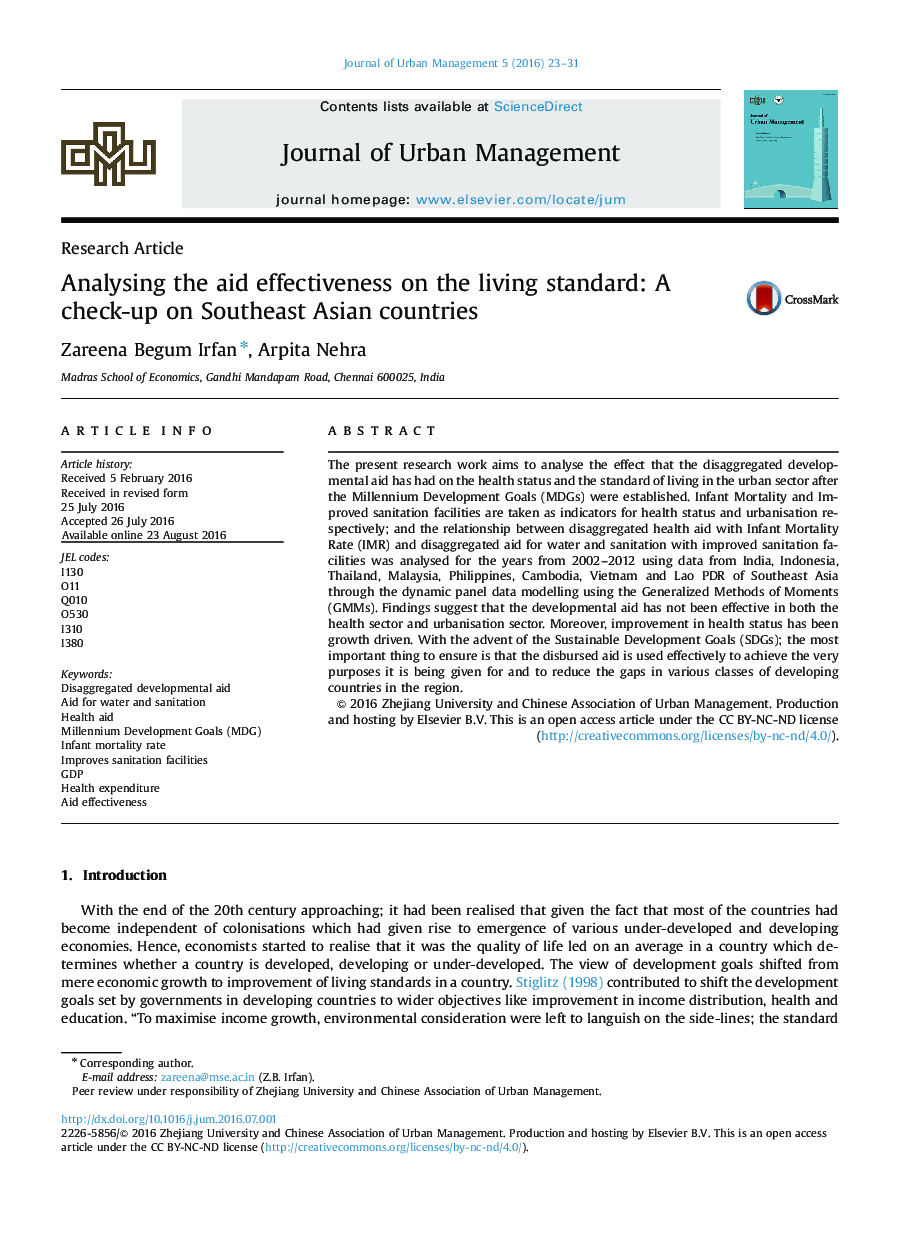| Article ID | Journal | Published Year | Pages | File Type |
|---|---|---|---|---|
| 5117941 | Journal of Urban Management | 2016 | 9 Pages |
The present research work aims to analyse the effect that the disaggregated developmental aid has had on the health status and the standard of living in the urban sector after the Millennium Development Goals (MDGs) were established. Infant Mortality and Improved sanitation facilities are taken as indicators for health status and urbanisation respectively; and the relationship between disaggregated health aid with Infant Mortality Rate (IMR) and disaggregated aid for water and sanitation with improved sanitation facilities was analysed for the years from 2002-2012 using data from India, Indonesia, Thailand, Malaysia, Philippines, Cambodia, Vietnam and Lao PDR of Southeast Asia through the dynamic panel data modelling using the Generalized Methods of Moments (GMMs). Findings suggest that the developmental aid has not been effective in both the health sector and urbanisation sector. Moreover, improvement in health status has been growth driven. With the advent of the Sustainable Development Goals (SDGs); the most important thing to ensure is that the disbursed aid is used effectively to achieve the very purposes it is being given for and to reduce the gaps in various classes of developing countries in the region.
